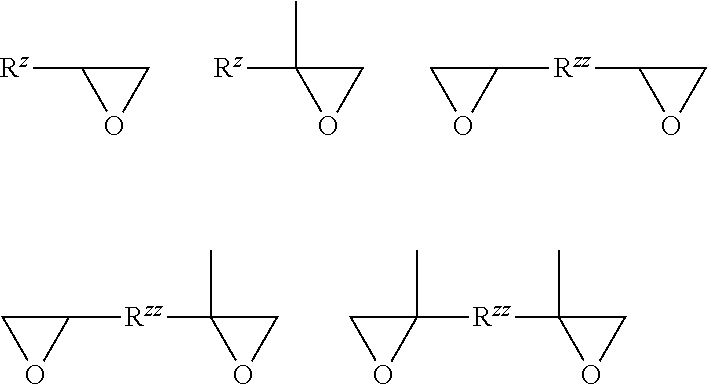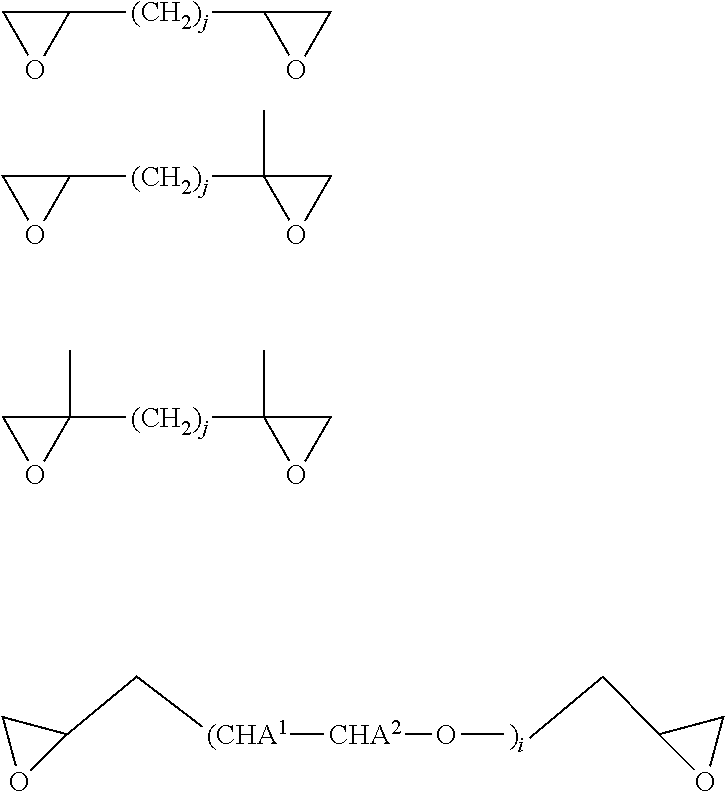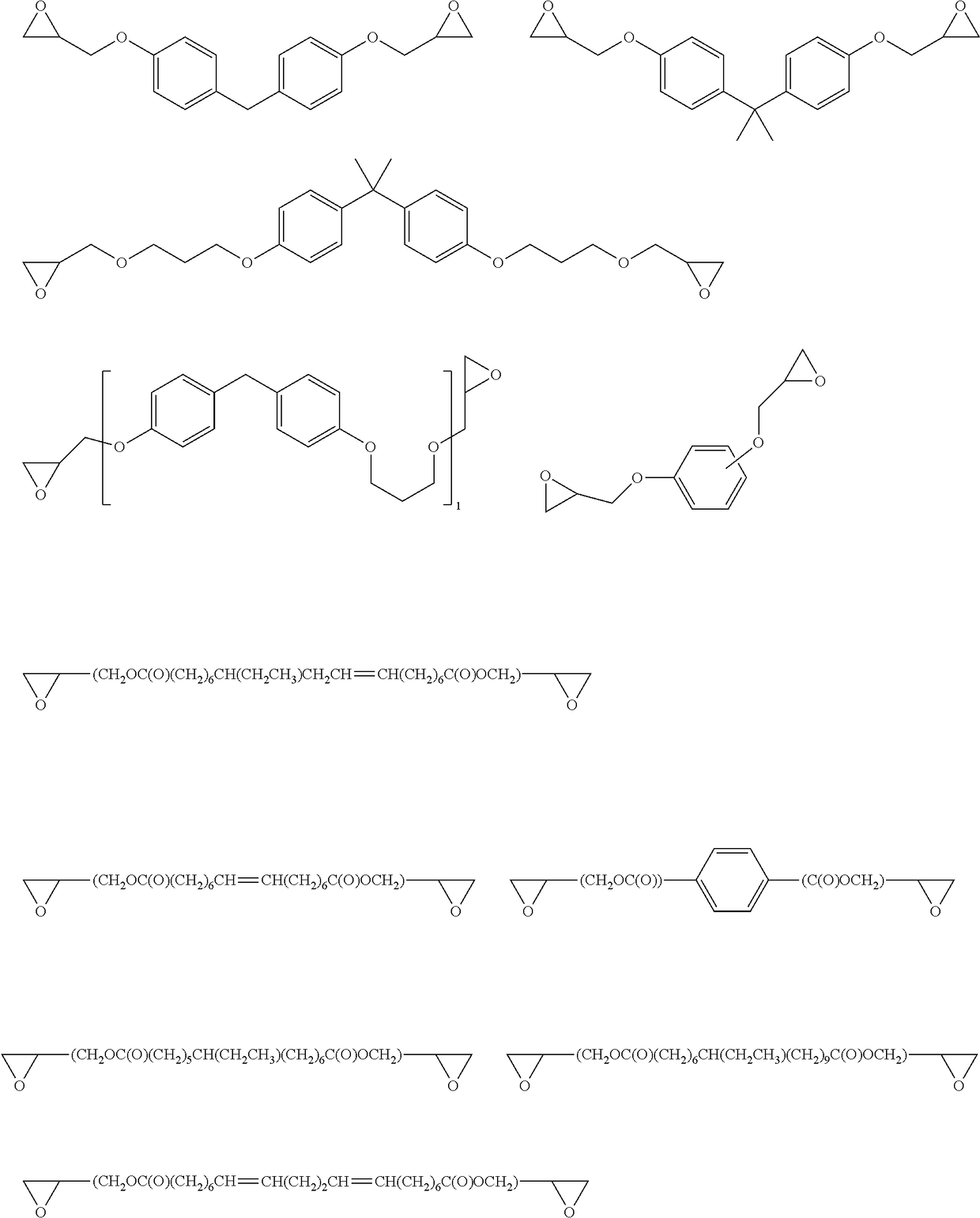Aggregating compositions, modified particulate solid compositions, and methods for making and using same
- Summary
- Abstract
- Description
- Claims
- Application Information
AI Technical Summary
Benefits of technology
Problems solved by technology
Method used
Image
Examples
example 1
[0155]92.00 g of Reilline 400 (a 4-ethenylpyridine homopolymer available from Vertellus Specialties Inc. and other suppliers), 46.00 g of Glycol Ether EB, and 46.00 g of ethylene glycol were weighed into a 400 mL beaker. These contents were stirred with a Calframo overhead stirrer for 10 minutes at 300 rpm. Then 16.22 g of a 50 wt. % citric acid aqueous solution were weighed into a plastic syringe and injected slowly at the beaker wall. The mixture was stirred for 90 more minutes. The final product had an amber transparent liquid and was designated AC1.
[0156]200.02 g of 100 mesh sand were weighed into a 400 mL beaker. 200 mL of a 2 wt. % KCl solution were added to the sand. Meanwhile, 15.43 g of AC1 were weighed into a plastic syringe. AC1 was added incrementally to the vortex of the sand and the 2 wt. % KCl being stirred at 450 rpm with the Calframo overhead stirrer. Then that treated sand composition was stirred for an additional 60 s and the liquid decanted. 200 mL of the 2 wt. %...
example 2
[0157]92.12 g of Reilline 400 (a 4-ethenylpyridine homopolymer available from Vertellus Specialties Inc. and other suppliers), 22.77 g of methanol, and 46.00 g of ethylene glycol were weighed into a 400 mL beaker. These contents were stirred with a Calframo overhead stirrer for 10 minutes at 300 rpm. Meanwhile, 10 g of boric acid were dissolved in 101.7 g of methanol to give a 9.0 wt. % boric acid in methanol solution. 25.89 g of the 9.0 wt. % boric acid solution was weighed into a plastic syringe and injected slowly at the beaker wall. The mixture was stirred for 90 more minutes. The final product was an amber transparent liquid and designated AC2.
[0158]200.04 g of 100 mesh sand were weighed into a 400 mL beaker. 200 mL of a 2 wt. % KCl solution were added to the sand. Meanwhile, 15.45 g of AC2 were weighed into a plastic syringe. AC2 was added incrementally to the vortex of the sand and the 2 wt. % KCl solution being stirred at 450 rpm with the Calframo overhead stirrer.
[0159]Even...
example 3
[0160]92.03 g of Reilline 400 (a 4-ethenylpyridine homopolymer available from Vertellus Specialties Inc. and other suppliers), 58.03 g of methanol, and 34.02 g of ethylene glycol were weighed into a 400 mL beaker. These contents were stirred with a Calframo overhead stirrer for 10 minutes at 300 rpm. Then 18.87 g of a 40 wt. % aminoethylethanolamine tris(methylene phosphonic acid) aqueous solution were weighed into a plastic syringe and injected slowly at the beaker wall. The mixture was stirred for 90 more minutes. The final product was an amber transparent liquid and was designated AC3.
[0161]200.04 g of 100 mesh sand were weighed into a 400 mL beaker. 200 mL of a 2 wt. % KCl solution were added to the sand. Meanwhile, 15.56 g of AC3 were weighed into a plastic syringe. AC3 was added incrementally to the vortex of the sand and the 2 wt. % KCl solution being stirred at 450 rpm with the Calframo overhead stirrer.
[0162]Eventually the vortex closed, the sand was viscosified and the san...
PUM
 Login to View More
Login to View More Abstract
Description
Claims
Application Information
 Login to View More
Login to View More - R&D
- Intellectual Property
- Life Sciences
- Materials
- Tech Scout
- Unparalleled Data Quality
- Higher Quality Content
- 60% Fewer Hallucinations
Browse by: Latest US Patents, China's latest patents, Technical Efficacy Thesaurus, Application Domain, Technology Topic, Popular Technical Reports.
© 2025 PatSnap. All rights reserved.Legal|Privacy policy|Modern Slavery Act Transparency Statement|Sitemap|About US| Contact US: help@patsnap.com



